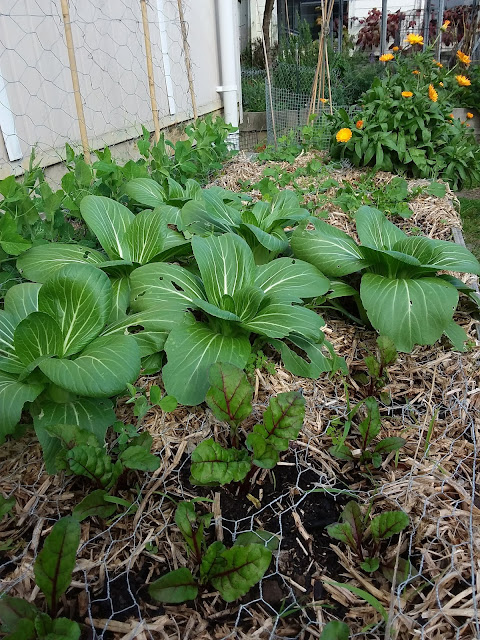The Things That Keep
Time has gotten away from me, and here it is, the first of June, the first day of Winter as we count it here in New Zealand. I do love Fall in the Garden, and I'm a little sorry to see it go. We had an unsettlingly warm and dry Fall, actually. My pumpkins and capsicum hung in there far too long, which was a little awkward as I tried to find places to sew my Winter veggies. Now it is officially Winter and it is still unseasonably warm. Today felt like a proper Fall day, in fact, with howling gusts of wind sweeping through ever-changing weather - wind, thunderstorm, rain, a fleeting moment of sunshine. Beautiful Fall leaves in sunset shades fluttering romantically down from trees wherever I go.
I love the Fall harvest season, and now it is pretty much finished. My favourite bits are the things you stash away for Winter, the things that keep. The things that dry or cure. They may represent a small portion of our Winter cooking, but they remind me that this is how they did it; this is how our ancestors made it through the Winter. I have learned how to cure onions and kumera, though I wasn't very successful at the latter. Pumpkins are extraordinarily easy to cure, and I love seeing them lined up in my pantry, content to wait their turn. I know how to dry runner beans, too. The trick is to pick them off soon as the pods turn brown, and store them in a dry place in a paper bag until you're ready to shell them all out.
This year I grew popcorn for the first time. It's always exciting growing something new. It always takes me by surprise, the beauty of these plants we grow for food. Something about corn stalks waving in the breeze is deeply satisfying. And then the reveal - when I went to harvest the corn cobs. Peeling back the layers, ribbed husk and smooth corn silk, to reveal the neat little rows of kernels, glowing like gemstones.
I grew two varieties. Yellow popcorn from seedlings given to me by a friend. These came out looking remarkably like the popcorn you buy at the store. The second was a mini black popcorn. The kernels are a pearly blue-black when first picked, and a lot smaller. It always feels a little bit magic, growing something for the first time when I've only ever bought it at the supermarket. Popcorn is already a little bit magic. Taking my carefully grown, harvested, and dried kernels, and heating them with a little oil until they popped, felt like a magic trick.
Before I started gardening, I don't think I realised that popcorn was a type of corn. I thought maybe it was something you did to the corn that made it pop-able. I associated it with popcorn machines and microwave popcorn - something modern and technological. But it turns out it just grows like that and it has been around for a long time. Historians think that people in the Americas have been eating popcorn for over 9,000 years. The oldest popcorn on record was found in Peru, and it has been carbon dated at about 6,700 years old.
For long-keeping corn, I reckon popcorn is a lot simpler for the home gardener than the alternative. The kinds of dry corn that you need to grind up for cornmeal take a lot of work. Popcorn just takes some oil and a pan with a lid.
After picking the corn and peeling off all or most of the layers of husk, they need to be set somewhere out of the sun and with decent air circulation so they can dry. After a week or two, pop off a few kernels to test. If the pop well, they are done. If not, try again next week. When they are ready, you get the satisfying job of popping the kernels off of the cobs, ready for storage.
It brings me a lot of joy every time I see my little jars of dried kernels, softly shinning like treasures on the shelf in my pantry. Stashed away to keep through the Winter, just like people have been doing for thousands of years.






Comments
Post a Comment